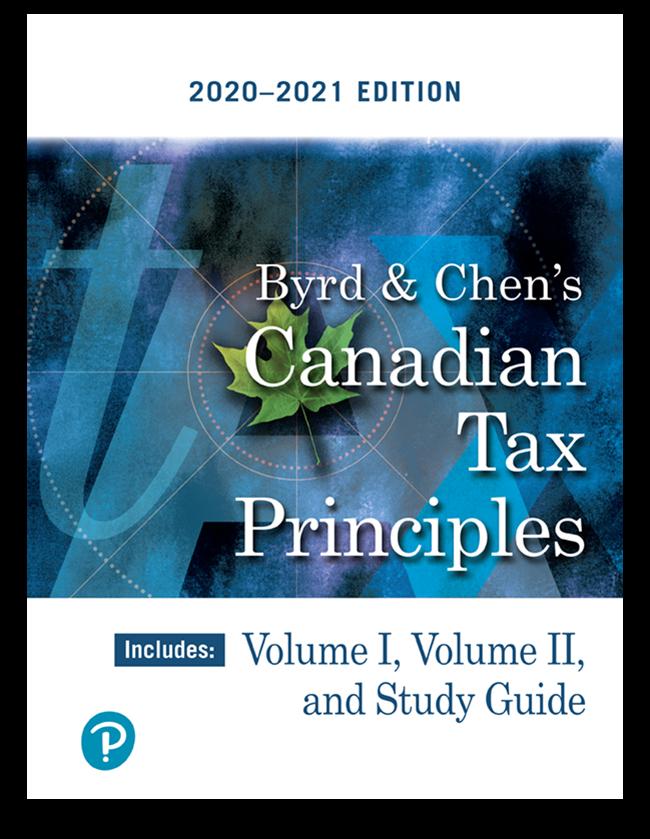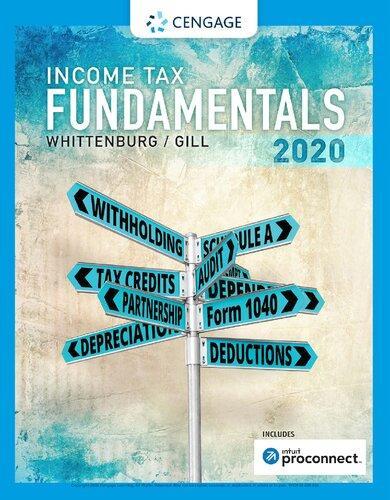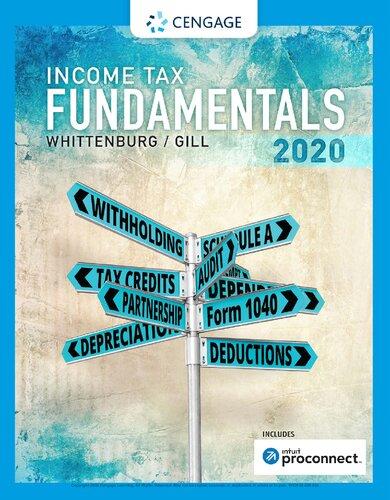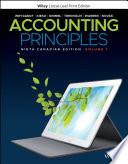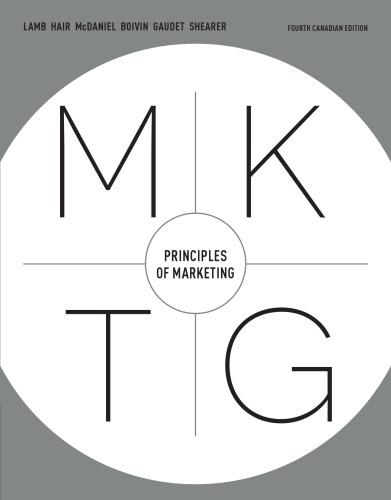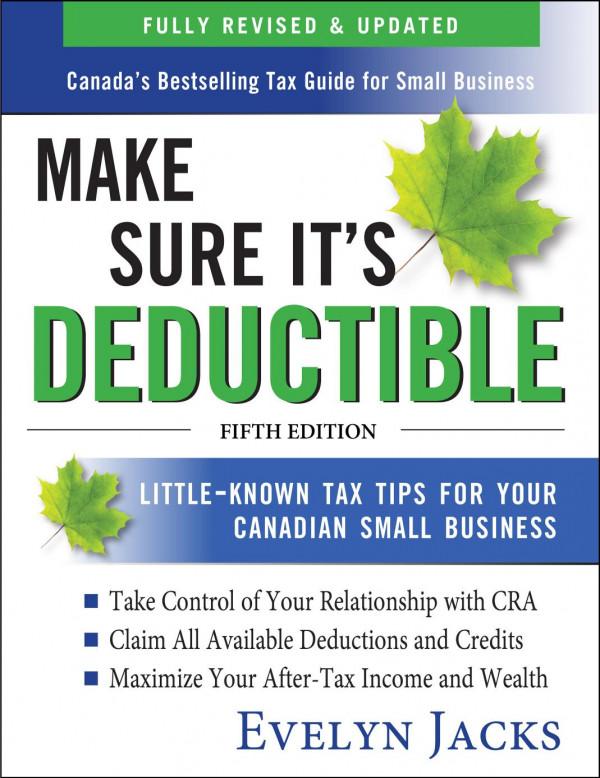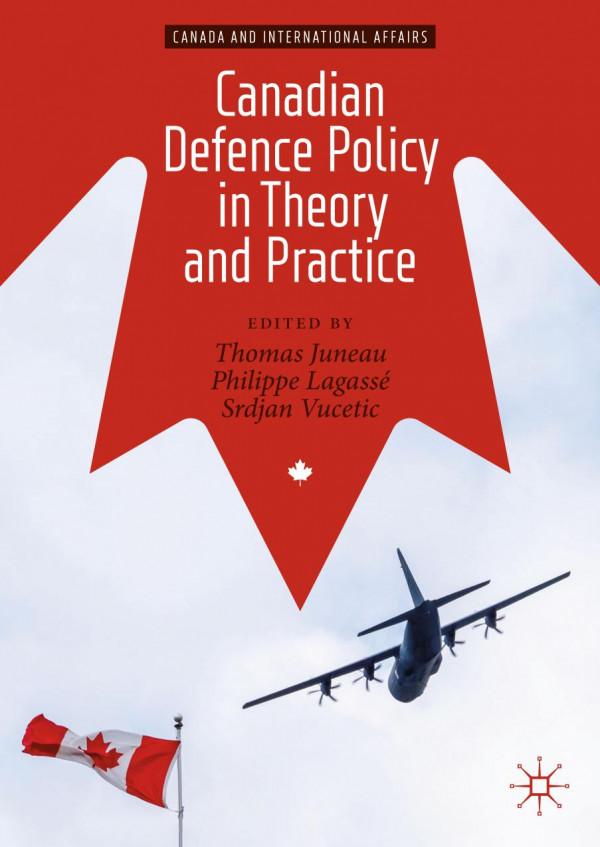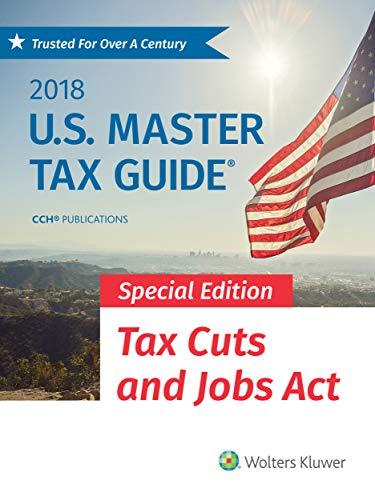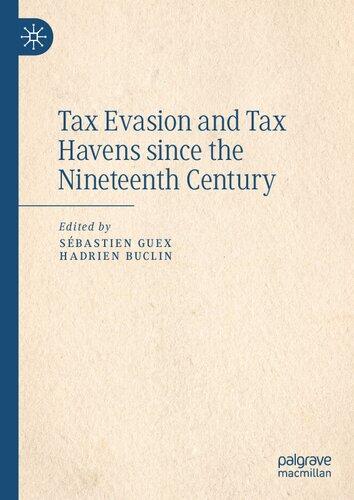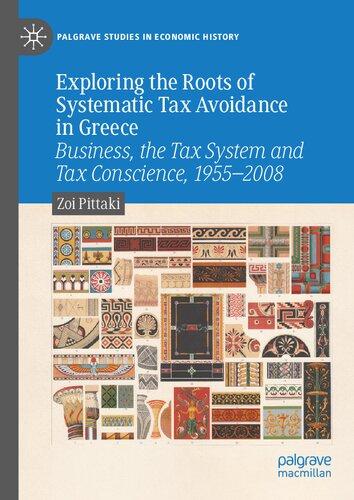PREFACE
Objectives Of The Canadian Tax Principles Package
Subject Coverage
The objective of this text is to provide coverage of all the tax subjects that are taught in Canadian college and university tax courses. In so doing, it also provides comprehensive coverage of almost all the tax issues that are required in the educational programs of CPA Canada. The one area of these programs that is not covered is “Reporting Systems And Data Requirements For Tax Compliance”.
This material is designed to be used in a two semester university or college course and is far too extensive to be completely covered in a single one semester course. The traditional split in the material would be to cover Chapters 1 through 11 in a first course dealing with the determination of Net Income For Tax Purposes for all taxpayers, as well as the calculation of Taxable Income and Tax Payable for individuals. This could be followed by a second course where the focus is primarily on the taxation of corporations. The relevant material on corporations is found in Chapters 12 through 17. The remaining Chapters 18 through 21 deal with partnerships, trusts, international taxation, and GST/HST.
Level Of Coverage
In terms of style, we have attempted to strike a balance between the kind of complete documentation that can render the material incomprehensible to anyone other than a tax professional, and the total elimination of references that would make it impossible for readers to expand their understanding of particular points. In those situations where we feel the issue is sufficiently complex that further investigation could be helpful, we have provided a list of references to the relevant Sections of the Income Tax Act or other related materials. In contrast, no direction has been provided when the material is either very straightforward or where the relevant parts of the Act would be obvious.
This book can be used with or without additional source material. Some instructors require students to acquire a copy of the Income Tax Act and permit its use as a reference during examinations. For instructors wishing to take this approach, frequent references to the Act have been included. For instructors not wishing to require the use of the Income Tax Act, we have designed the problem material so that students should be able to solve all of the included problems relying solely on the text as a reference.
The Need For Two Volumes
In the over 30 years that we have been writing this text, we have seen the content grow from about 400 pages to more than 1,500 pages. We initially dealt with this increase in size by providing a separate Study Guide. However, the text alone has grown to over 1,000 pages and, while accommodating this in a single volume is feasible, the result would be far less useful to students than dividing the material into two reasonably sized volumes.
If there was any consensus among our users as to which subjects should be dealt with in each volume, they could be made available separately. However, virtually all of our users omit material from Volume I and include material from Volume II. Further, there is no consistent pattern as to
which material is omitted and which material is included. Given this, it would not be possible to produce separate volumes that meet the needs of all of our users.
The Study Guide
The major objective of the Study Guide is to provide students with convenient access to the solutions for the Exercises and Self Study Problems. Having these solutions in a separate volume makes it much easier for students to simultaneously view the problem while solving it and then consult its complete and detailed solution.
The Study Guide also provides a number of additional features to enhance the learning experience. These can be described as follows:
• Detailed instructions on “How To Work Through” each Chapter in the text. This includes guidance on when to attempt Exercises and Self Study Problems as the student reads through the text.
• A detailed list of “Learning Objectives” for each Chapter. This allows the student to ensure that he/she has understood all of the relevant subjects covered in the Chapter.
• Sample tax returns for both individuals and corporations. These are useful practice for students using the ProFile tax software that is available with this text.
• At the end of each Chapter in the text, there is a list of key terms that were used in that Chapter. All of these terms are alphabetically listed in a Glossary that is at the back of the Study Guide. This provides an easy way to find the meaning of a term that was introduced in one Chapter, but is being referred to again in a subsequent Chapter.
Problem Material For Students
The Canadian Tax Principles package contains a large number of problems with detailed solutions. See the MyLab section of this preface for more information. The various types of problems and their location are as follows:
Exercises These are short problems that are focused on a single issue. Each Exercise is presented in the Canadian Tax Principles text, directly following the material that is relevant to its solution. This provides you with immediate feedback as to whether you have understood the material that you have just read. Solutions to the Exercises can be found in the Study Guide.
Self Study Problems These problems are more complex than the Exercises and include a number of comprehensive problems. We have marked the point within the text that you should work each Self Study Problem. Solutions to the Self Study Problems are included in the Study Guide, while the problems are available on MyLab.
Tax Software Self Study Problems These problems are designed to be solved using the ProFile software that is available with Canadian Tax Principles. These problems are found in the Study Guide. The completed tax returns and solutions are available on MyLab.
Supplementary Self Study Problems Additional Self Study Problems, along with their detailed solutions, are available on MyLab for each chapter.
Practice Examinations A 90 minute practice examination and solution is available on MyLab for each chapter.
For Instructors
Canadian Tax Principles contains several types of problems designed for instructors:
Assignment Problems These problems vary in difficulty and include the most difficult non-comprehensive problems in the text. They are found at the end of each chapter of
Canadian Tax Principles. They are sometimes adapted from professional examinations and may involve a number of different issues. Solutions to these problems are available only to instructors, through the Instructor’s Resources links on MyLab.
Assignment Problems (Comprehensive) These comprehensive problems are the most challenging type of problem material in the text. They are cumulative in that they incorporate issues from previous chapters. There are two comprehensive assignment problems per chapter in Chapters 6 through 11 and they are found at the end of the Assignment Problems for the chapter. Solutions to these problems are available only to instructors, through the Instructor’s Resources links on MyLab.
Tax Software Assignment Problems Tax Software Assignment Problems dealing with personal tax returns are found at the end of Chapters 4 and 11. An additional Assignment Tax Software Problem, involving a corporate tax return, is located at the end of Chapter 14. Solutions to Assignment Tax Software Problems are available only to instructors, through the Instructor’s Resources links on MyLab.
Examination Problems For instructors adopting Canadian Tax Principles, a large and comprehensive selection of problems and solutions for use on examinations is available. These include multiple choice questions (over 700), true/false questions (over 200), essay questions (over 400), exercises (over 400), as well as more than 350 comprehensive types of problem ranging in difficulty from easy to very difficult. These are available only to instructors, through the Instructor’s Resources links on MyLab.
MyLab Accounting
The various items that are included on MyLab can be described as follows:
• Pearson eText This eText gives you access to the text whenever and wherever you have access to the Internet, through various devices. It contains the content of both volumes of the text and the Study Guide. The eText pages look exactly like the printed text and offer powerful functionality. You can create notes, highlight text in different colours, create bookmarks, zoom, and search.
• NEW Data Analytics Project With this new assignable project, students analyze a comprehensive data set and make a series of accounting decisions. This assignment is designed to prepare students for the data analytics competencies that have been included in the most recent CPA Competency Map. Students will use Excel-based tools to assess data for accuracy, then organize and filter large quantities of information to make the data appropriate for income tax calculations. Students will then incorporate income tax concepts, including the calculation of Net Income, Taxable Income, and Tax Payable using the outputs of their data analysis in Excel. This assignment also includes data visualization and incorporates tax planning concepts for a business.
• Self Study Problems Self Study Problems are available on MyLab, with solutions in your Study Guide. In the textbook, we have marked the point within the text that you should work each Self Study Problem.
• Supplementary Self Study Problems Additional Self Study Problems for each chapter, along with their detailed solutions, are available for further practice in problem solving. These are separated out by chapter.
• EY’s Federal Income Tax Collection (FITAC) This comprehensive electronic tax research library contains the Income Tax Act, Income Tax Folios, and other official materials. In addition, it includes an electronic version of the Canadian Tax Principles text. Designed for reference purposes, this version provides electronic links from the text material to the various references contained in FITAC (e.g., the Income Tax Act). Note
however, it only includes the text and does not have the Exercises and other problem material that are provided with the printed text.
• ProFile Tax Return Preparation Software Intuit’s professional tax preparation software, ProFile, is available free of charge to users of Canadian Tax Principles. You can use this software to prepare returns for individuals, corporations, and trusts and includes a large number of tax forms. This software is for educational use only and cannot be used to file tax returns.
• Corrections Any corrections to the text, Study Guide, or other student material are provided on MyLab throughout the year. Please check periodically to help avoid frustration.
• Practice Examinations A 90-minute practice examination, along with a solution and suggested marking guide, is available for each chapter. These examinations contain a variety of problems, including multiple choice, essay questions, and longer problems.
• Power Point Presentations There is a PowerPoint presentation for each chapter. These provide the basis for a quick review of the material covered in the chapter.
• Glossary Flashcards These flashcards help you test your understanding of the key terms used in each chapter.
• 2020 Tax Rates, Credits, and Common CCA Classes This is available as a PDF file, for reference. This tax information is also available at the front of Volumes 1 and 2, and CCA classes are available in the Chapter 5 Appendix.
• Tax Returns The Study Guide contains tax return examples and Self Study tax software problems, along with notes to their solutions. The completed tax returns are available on MyLab, to download and use with your ProFile software, or to view in PDF files.
Recent Changes 2020 COVID-19
The tax system in Canada, as in many countries, is premised on regular tax reporting, regular withholdings, remittances, and payment obligations all based upon a normal functioning economy. The Canada Revenue Agency (CRA) is mandated to ensure the continuity and smooth operation of the tax system, which includes the disbursement of benefits such as the GST/HST credits and the Canada Child Benefit, an audit function to ensure the accuracy of tax reporting, and many other complementary functions such as Collections, Appeals, and Objections. The CRA administers both the Income Tax Act (ITA) and Excise Tax Act (ETA) and provides administrative positions for a multitude of issues all with the purpose of upholding its mandate and the integrity of the Canadian tax system.
The March 11, 2020, announcement by the World Health Organization (WHO) declaring a pandemic changed the lives of Canadians as COVID-19 found its way into Canadian homes and institutions. Aside from the devastating impact on Canadian lives the necessary action to contain the virus effectively shut down a significant part of the Canadian economy, resulting in millions of Canadians unable to work as businesses shut down. We no longer had a smooth functioning economy, and both the Federal and provincial governments were called on to address the unprecedented financial impact upon Canadians.
The Federal government quickly rose to the challenge by instituting targeted financial assistance measures. We all have become familiar with acronyms such as the CERB (Canadian Emergency Response Benefit), the CEWS (Canadian Emergency Wage Subsidy), and the CESB (Canadian Emergency Student Benefit) to name but a few. In the interim Canadians found themselves facing income tax reporting obligations such as the standard April 30 deadline for filing individual income tax returns, instalment payments for both income tax and GST/HST, various tax withholding obligations, etc. In step with the Federal government announcements, the CRA issued numerous releases

delaying the filing of individual tax returns, payment obligations for outstanding amounts owing for 2019, delayed instalment payments for 2020, and a promise that no interest or penalties would be charged until the extended times had lapsed. The audit and appeals functions came to an abrupt halt for the most part as CRA employee efforts were redirected to dealing with COVID-19 related matters. There remains a plethora of additional, albeit temporary, administrative changes that the CRA has announced to give some breathing room to Canadians as we all struggle with this unprecedented pandemic in modern times. Most of these announcements are supported by new legislation.
Given the temporary nature of these government initiatives and administrative changes by the CRA it is our view that providing detail of the numerous COVID-19 measures would not further the fundamental understanding of Canadian Tax Principles and as a result we have opted not to include coverage of these measures within the textbook. We would direct any of our readers who seek additional detailed information to visit the CRA website specifically at https://www. canada.ca/en/revenue-agency/campaigns/covid-19-update.html, which provides all the necessary and continually updated tax related information concerning COVID-19.
2018 Fall Economic Statement
One of the most important relatively recent income tax changes was announced on November 21, 2018, when the Department Of Finance released the Accelerated Investment Incentive (AccII) provisions as part of its fall economic statement. The new supportive legislation considerably revises the manner in which capital cost allowance (CCA) is calculated with respect to depreciable property acquired from November 21, 2018, to December 31, 2027. In comparison to the pre-November 21, 2018, system the new rules generally triple the normal CCA claims in the year of purchase for most depreciable property acquired before January 1, 2024. The incentives are reduced for depreciable property acquired from January 1, 2024, to December 31, 2027. In simple terms this new CCA system allows a larger first year CCA claim without changing the total CCA that can be claimed.
The details of these relatively new rules are discussed in Chapter 5 titled “Capital Cost Allowance”. Since CCA is an important topic in income tax these changes affect almost every subsequent Chapter.
2019 Economic and Fiscal Update
In recent years it has become common for the Federal government to release an Economic and Fiscal update typically, since 2011, in November. The title of the releases has not always remained the same – in 2018 the release was titled the “Fall Economic Statement”, as mentioned above. In any case, since 2016 the Federal government has used the annual fall release to introduce selective changes to the income tax system often targeted at the “middle class”. The 2019 update was released December 16, 2019, and included a change to the personal tax credits that would increase the Basic Personal Amount that had been previously indexed and announced at $12,298 for 2020 to $13,229 with plans to further increase the amount to $15,000 by 2023. The additional $931 of credit amount for 2020 would be automatic for individuals with Net Income of $150,473 or less, nil for those individuals with Net Income of $214,368 or higher, and prorated for individuals with Net Income between those two thresholds.
The details of the additional credit amount are discussed in Chapter 4 titled “Taxable Income And Tax Payable For Individuals”.
The 2020 Federal Budget? Complications
The Federal government, in early March 2020, announced that the 2020 budget would be released March 30, 2020. Shortly thereafter the pandemic announcement by the WHO quickly
brought to an end plans to go ahead with that budget. In May 2020 Prime Minister Trudeau announced that there were no plans to release a budget this year given the circumstances. In June the government announced a July 8 release date for an “Economic and Fiscal Snapshot” that appears to be designed to disclose the financial and economic affairs of the country following the unprecedented expenditure programs to assist Canadians throughout the pandemic. As a result we find ourselves in an interesting position without any significant tax changes that would typically accompany an annual Federal budget. There are, of course, plenty of changes to incorporate the numerous indexed amounts that are adjusted each year.
In addition it has become standard practice that Federal budgets introducing tax changes generally apply those changes to the immediately following or later years. As a result, the 2020 taxation year for example is impacted much more as a result of the 2019 Federal budget than it would have been by a 2020 Federal budget. We discuss this in the next section.
Previously Announced Measures
There are several measures that were announced in previous budgets that are still working their way through the system in 2020. They can be described as follows:
Employee Stock Options
In the 2019 Federal budget the government announced that draft legislation would be released to address perceived unfairness in the taxation of employee stock options, particularly the 50 percent stock option deduction that results in only one-half of stock option employee benefits included in income. The government identified that their primary concern was that employee stock options were being used to compensate wealthy executives of large mature companies when in their view such tax deferred compensation should be limited to CCPCs and non-CCPCs in the start-up or emerging phase of their existence.
Draft legislation was released June 2019 giving interested persons a six month consultation period to provide feedback to the Department of Finance by December 2019. The government subsequently indicated that revised legislation would accompany the 2020 Federal budget, which as we have seen has been postponed with no future date in sight. As a result the taxation of employee stock options remains unchanged at the moment.
New Trust Reporting Requirements
In the 2017 Federal budget the government announced their intention to enhance the information requirements for both resident and non-resident trusts. Details were released when the 2018 Federal budget was tabled February 27, 2018. The new reporting requirements will apply to the 2021 taxation year of most trusts, require the completion of a T3 return even though one may not have previously been required, and the completion of a new information schedule that will oblige the trust (subject to penalties) to identify all trustees and beneficiaries. In addition the trust will be required to identify persons who have the ability to exert control or override trustee decisions with respect to allocations of income and capital.
As a rule trusts have historically only been required to file a tax return (T3) if they owe tax or have made distributions of income or capital to beneficiaries. The new information reporting requirements will now oblige trusts to file an income tax return to provide the additional information beginning with the 2021 taxation year. Certain trusts, however, are exempted from these new reporting requirements. Notable exemptions include trusts that have been in existence less than three months, have less than $50,000 of assets, Graduated Rate Estates, Qualified Disability Trusts, and RRSP trusts.
2020 Content
The March 19, 2019, budget contained a fairly large number of proposals that were of varying importance. The following lists many of the changes that are relevant to this textbook.
Personal Tax Measures
• Provisions designed to prevent mutual funds from utilizing certain methods to allocate capital gains or income to unit holders on the redemption of their units that inappropriately defer tax or convert ordinary income into capital gains. The new rules apply to taxation years beginning on or after March 19, 2019.
• A new Canada training credit that will become available in 2020 (see Chapter 4).
• An increase in the Home Buyers’ Plan withdrawal limit from $25,000 to $35,000 as of March 20, 2019 (see Chapter 10).
• A modification of the change in use rules for multi-unit residential properties to expand the scope of the elective options to defer tax to include partial changes of use. The elective options previously only applied where all of the property use changed. The new rules apply to partial changes of use occurring after March 19, 2019 (see Chapter 8).
• An expansion of the types of annuities that can be used by certain registered plans to fund retirement income beginning with the 2020 taxation year (see Chapter 10).
• Changes to the rules for Registered Disability Savings Plans beginning 2021 (with a transitional rule back to March 19, 2019) where a beneficiary becomes ineligible because of temporarily failing to qualify for the disability tax credit.
• Changes to the rules for kinship care providers to allow them to qualify for certain tax incentives for children in their care even though they receive financial assistance. Changes are retroactive to January 1, 2009.
• Removal of the requirement that donations of Canadian cultural property be of national importance in order to qualify for enhanced charitable donations treatment. Amendment applies as of March 19, 2019.
• Amendments effective October 17, 2018, for the medical expense tax credit to reflect the new rules on the legalization of cannabis and the introduction of the Cannabis Act.
• Modification of the rules to restrict tax-free transfers from Registered Pension Plans to Individual Pension Plans beginning March 19, 2019.
• New rules, beginning in 2019, to impose the highest tax rate where a TFSA is considered to be carrying on a business and to expand the list of those jointly responsible for the tax.
Business Tax Measures
• New rules that add two new depreciable property classes (54 and 55), which will provide for a first year write-off of 100 percent for zero emission vehicles purchased between March 19, 2019, and December 31, 2023; 75 percent for zero-emission vehicles purchased in 2024 and 2025; and 55 percent for purchases made in 2026 and 2027. (Chapter 5).
• Removal of the taxable income constraint for determining the amount of scientific research expenditures that are eligible for the enhanced 35 percent refundable investment tax credit. The change applies to taxation years ending after March 18, 2019 (see Chapter 14).
• Changes in the rules to correct an anomaly that would have resulted in certain farming and fishing income from qualifying for the small business deduction. This change is retroactive to 2016.
• Several provisions to enhance government support for Canadian journalism. These include:
• a non-refundable tax credit of up to $500 for digital news subscriptions for 2020 to 2024 (see Chapter 4);
• a refundable labour credit for salaries paid to “eligible newsroom employees” beginning January 1, 2020 (see Chapter 12); and
• a provision that extends qualified donee status to registered journalism organizations also beginning January 1, 2020.
We have provided coverage of some, but not all, of these changes as indicated by the Chapter references included in the list items.
Acknowledgments
Acknowledgments
We would like to thank the many students who have used this book, the instructors who have adopted it at colleges and universities throughout Canada, as well as the assistants and tutors who have been involved in these courses.
In terms of the content of the book, we would like to give special thanks to:
Gary Donell After many years with the CRA, Gary is now affiliated with the Ottawa office of Welch LLP. Gary has been a significant contributor to this text for nearly 20 years, bringing to it an outstanding knowledge of income tax issues. He has made many valuable suggestions that have contributed greatly to the accuracy and clarity of the material. In addition, he was responsible for writing much of the Chapter 18 material on partnerships and the Chapter 20 material on international taxation. Gary has undertaken this work independently of his work with Welch LLP. The views that are contained in this publication do not, in any way, reflect the policies of Welch LLP.
Ruth Ann Strickland (a.k.a. Eagle Eye) - Western University (London) Over the last few years, Ruth Ann has shown an uncanny ability to spot both major and minor errors. She has been responsible for helping us eliminate many such items, greatly enhancing the quality of our material. We are very grateful for her assistance.
Also of great help in improving the text over the years were the comments and corrections provided by the following instructors:
• Joseph Armanious - McGill University (Montreal)
• Ann Bigelow - Western University (London)
• Laura Cumming - Dalhousie University (Halifax)
• Larry Goldsman - McGill University (Montreal)
• Susan Hurley - NAIT (Edmonton)
• Patrick Massicotte - St. Lawrence College
• Jay Perry - Niagara College (Niagara-On-The-Lake)
• Victor Waese - BCIT (Burnaby)
• Ronald Wong - Capilano University (Vancouver)
It’s Our Fault
As always, we have made every effort to accurately reflect appropriate tax rules. Every word in the text, problems, and solutions has been read by at least two and, in most cases three, individuals. However, it is virtually certain that errors remain. These errors are solely the responsibility of the authors and we apologize for any confusion that they may cause you.
Clarence Byrd, Clarence Byrd Inc.
Ida Chen, Clarence Byrd Inc.
February 2020
Reference
118(1.1)
Information Applicable To Individuals
2020 Rates, Credits, And Other Data
For your convenience, this information, as well as the Chapter 5 Appendix of common CCA rates, is available online as a .PDF file.
Information Applicable To Individuals
Federal Tax
Rates For
Individuals
118(1)(a)
Federal Tax Credits For Individuals – Personal Tax Credits (ITA 118)
Basic Personal Amount (BPA) There are three alternatives dependent upon Net Income. (1) For individuals with Net Income of $150,473 or less the BPA is $13,229, (2) for individuals with Net Income of $214,368 or higher the BPA is $12,298, and (3) for individuals with Net Income between $150,474 and $214,367 the BPA is calculated as $13,229 – [$931][(Net Income – $150,473) ÷ $63,895]
Married Persons 15% the of BPA for the individual
Spousal 15% of the BPA for the individual and: if the spouse of the married individual is dependent because of a mental or physical infirmity, there is an additional amount of $2,273 added to the BPA. The total of these two amounts ($15,502) is reduced by the income of the individual's spouse.
Eligible Dependant 15% of BPA for the individual and: if the dependent person is dependent because of a mental or physical infirmity, there is an additional amount of $2,273 added to the BPA. The total of these two amounts ($15,502) is reduced by the income of the dependent person.
Canada Caregiver For Child Under 18 15% of $2,273 ($341).
Single Persons 15% of the BPA
Canada Caregiver 15% of $7,276 ($1,091), reduced by 15% of the dependant’s income in excess of $17,085.
Age 15% of $7,637 ($1,146). The base for this credit is reduced by the lesser of $7,637 and 15% of the individual’s net income in excess of $38,508. Not available when income is more than $89,421. If the individual cannot use this credit, it can be transferred to a spouse or common-law partner.
Pension 15% of up to $2,000 of eligible pension income for a maximum credit of $300 [(15%) ($2,000)]. If the individual cannot use this credit, it can be transferred to a spouse or commonlaw partner.
Canada Employment Credit 15% of up to $1,245. This produces a maximum credit of $187.
Other Common Federal Personal Credits (Various ITA)
Adoption Expenses Credit 15% of eligible expenses (reduced by any reimbursements) up to a maximum of $16,563 per adoption. This results in a maximum credit of $2,484.
Digital News Subscriptions 15% of the lesser of $500 and the cost of qualifying subscription expenses.
Home Accessibility Credit 15% of lesser of $10,000 and the amount of qualifying expenditures for the year.
First Time Home Buyer’s Credit 15% of $5,000 ($750) of the cost of an eligible home.
Volunteer Firefighters Credit 15% of $3,000 ($450) for qualifying volunteers.
Volunteer Search And Rescue Workers Credit 15% of $3,000 ($450) for qualifying volunteers.
Charitable Donations - Regular The general limit on amounts for this credit is 75% of Net Income. There is an addition to this general limit equal to 25% of any taxable capital gains and 25% of any recapture of CCA resulting from a gift of capital property. In addition, the income inclusion on capital gains arising from a gift of some publicly traded shares is reduced from onehalf to nil. For individuals, the credit is equal to: [(15%)(A)] + [(33%)(B)] + [(29%)(C)] where:
A = The first $200 of eligible gifts.
B = The lesser of:
• Total gifts, less $200; and
• Taxable Income, less $214,368.
C = The excess, if any, by which the individual’s total gifts exceed the sum of $200 plus the amount determined in B.
Medical Expenses The medical expense tax credit is determined by the following formula: [15%] [(B - C) + D] , where:
B is the total of an individual’s medical expenses for him- or herself, his or her spouse or common-law partner, and any of his or her children who have not reached 18 years of age at the end of the year.
C is the lesser of 3% of the individual’s Net Income For Tax Purposes and $2,397 (2020 figure).
D is the total of all amounts each of which is, in respect of a dependant of the individual (other than a child of the individual who has not attained the age of 18 years before the end of the taxation year), an amount determined by the formula:
E - F, where:
E is the total of the dependant’s medical expenses
F is the lesser of 3% of the dependant’s Net Income For Tax Purposes and $2,397 (2020 figure).
Disability - All Ages 15% of $8,576 ($1,286). If not used by the disabled individual, it can be transferred to a person claiming that individual as a dependant.
Disability Supplement - Under 18 And Qualifies For The Disability Tax Credit 15% of $5,003 ($750), reduced by the total of amounts paid for attendant care or supervision in excess of $2,930 that are deducted as child care costs, deducted as a disability support amount, or claimed as a medical expense in calculating the medical expense tax credit.
Education Related Credits
• Tuition Fees, Which Includes Examination And Ancillary Fees
• 15% of qualifying tuition fees
• 15% of examination fees for both post-secondary examinations and examinations required in a professional program
• 15% of ancillary fees that are imposed by a post-secondary educational institution on all of their full or part time students. Up to $250 in such ancillary fees can be claimed even if not required of all students.
• Interest On Student Loans
15% of interest paid on qualifying student loans.
• Transfer Of Tuition Credit
If the individual cannot use the credit, is not claimed as a dependant by his or her spouse, and does not transfer the unused credit to a spouse or common-law partner, then a parent or grandparent of the individual can claim up to $750 [(15%) ($5,000)] of any unused tuition credit. The amount that can be transferred is reduced by the amount of the credit claimed by the student for the year.
Employment Insurance 15% of amounts paid by employees up to the maximum Employment Insurance premium of $856 (1.58% of $54,200). This produces a maximum tax credit of $128 [(15%)($856)].
Canada Pension Plan 15% of 4.95 percent of contributions. The maximum credit base for all individuals is $2,732 [(4.95%)($58,700 - $3,500)]. This produces a maximum tax credit of $410 [(15%)($2,732)].
Refundable Medical Expense Supplement The individual claiming this amount must be over 17 and have earned income of at least $3,714. The amount is equal to the lesser of $1,272 and 25/15 of the medical expense tax credit. The refundable amount is then reduced by 5% of family Net Income in excess of $28,164. Not available when family income is more than $53,604.
Refundable Teacher And Early Childhood Educator School Supply Tax Credit A maximum of 15% of up to $1,000 ($150) of eligible expenditures that are made by eligible educators.
Canada Training Credit The lesser of training amount limit and 50% of eligible training costs incurred in the previous year.
Political Donations Three-quarters of the first $400, one-half of the next $350, one-third of the next $525, to a maximum credit of $650 on donations of $1,275.
Labour Sponsored Venture Capital Corporations (LSVCC) Credit The federal credit is equal to 15 percent of acquisitions of provincially registered LSVCCs.
4 Chapter 4
Chapter 9
Dividend Tax Credit
• Eligible Dividends These dividends are grossed up by 38%. The federal dividend tax credit is equal to 6/11 of the gross up. The credit can also be calculated as 15.02% of the grossed up dividends, or 20.7272% of the actual dividends received.
• Non-Eligible Dividends These dividends are grossed up by 15%. The federal dividend tax credit is equal to 9/13 of the gross up. The credit can also be calculated as 9.0301% of the grossed up dividends, or 10.3846% of the actual dividends received.
Other Data For Individuals
Dividend Gross Up
Eligible Dividends For these dividends, the gross up is 38% of dividends received.
Non-Eligible Dividends For these dividends, the gross up is 15% of dividends received.
OAS Clawback Limits The tax (clawback) on Old Age Security (OAS) benefits is based on the lesser of 100% of OAS benefits received, and 15% of the amount by which “threshold income” (Net Income For Tax Purposes, calculated without the OAS clawback) exceeds $79,054.
EI Clawback Limits The tax (clawback) on Employment Insurance (EI) benefits under the Employment Insurance Act is based on the lesser of 30% of the EI benefits received, and 30% of the amount by which “threshold income” exceeds $67,750 (1.25 times the maximum insurable earnings of $54,200). For this purpose, “threshold income” is Net Income For Tax Purposes, calculated without the OAS or EI clawbacks.
Child Care Expenses The least of three amounts:
1. The amount actually paid for child care services. If the child is at a camp or boarding school, this amount is limited to a weekly amount $275 (any age if eligible for disability tax credit), $200 (under 7 year of age), or $125 (age 7 through 16 or over 16 with a mental or physical impairment).
2. The sum of the Annual Child Care Expense Amounts for the taxpayer’s eligible children. The per child amounts are $11,000 (any age if eligible for disability tax credit), $8,000 (under 7 year of age), or $5,000 (age 7 through 16 or over 16 with a mental or physical impairment).
3. 2/3 of the taxpayer’s Earned Income (for child care expenses purposes).
Chapter 10
RRSP Deduction Room For 2020, the addition to RRSP deduction room is equal to:
• the lesser of $27,230 and 18% of 2019 Earned Income,
• reduced by the 2019 Pension Adjustment and any 2020 Past Service Pension Adjustment,
• and increased by any 2020 Pension Adjustment Reversal.
Chapter 11
Lifetime Capital Gains Deduction For 2020, the deduction limit for dispositions of shares of qualified small business corporations is $883,384. There is an additional amount for farm or fishing properties of $116,616, providing a total of $1,000,000 for such properties.
Provincial Tax Rates And Provincial Credits For Individuals Provincial taxes are based on Taxable Income, with most provinces adopting multiple rates. The number of brackets range from three to five. Provincial tax credits are generally based on the minimum provincial rate applied to a credit base that is similar to that used for federal credits. In addition to regular rates, two provinces, Ontario and Prince Edward Island, use surtaxes.
Information Applicable To Corporations
Information Applicable To Individuals And Corporations
Prescribed Rate The following figures show the base rate that would be used in calculations such as imputed interest on loans. It also shows the rates applicable on amounts owing to and from the CRA. For recent quarters, the interest rates were as follows:
*The rate on refunds to corporations is limited to the base rate, without the additional 2%.
Automobile Deduction Limits
• CCA is limited to the first $30,000 of the automobiles cost, plus applicable GST/HST/ PST (not including amounts that will be refunded through input tax credits).
• Interest on financing of automobiles is limited to $10 per day.
• Deductible leasing costs are limited to $800 per month (other constraints apply).
• Operating cost benefit = $0.28 per kilometre.
• Deductible rates = $0.58 for first 5,000 kilometres, $0.52 for additional kilometres.
CCA Rates See Appendix to Chapter 5.
Quick Method Rates (GST Only)
Note Different rates apply in the provinces that have adopted an HST system.
Information Applicable To Corporations
Federal Corporate Tax Rates are as follows (federal tax abatement removed):
General Rate Income Pool A CCPC’s General Rate Income Pool (GRIP) is defined as follows:
• The GRIP balance at the end of the preceding year; plus
• 72% of the CCPC’s Taxable Income after it has been reduced by amounts eligible for the small business deduction and aggregate investment income; plus
• 100% of eligible dividends received during the year; plus
• adjustments related to amalgamations and wind-ups; less
• eligible dividends paid during the preceding year.
Small Business Deduction is equal to 19% of the least of:
A. Net Canadian active business income.
B. Taxable Income, less:
1. 100/28 times the ITA 126(1) credit for taxes paid on foreign non-business income, calculated without consideration of the additional refundable tax under ITA 123.3 or the general rate reduction under ITA 123.4; and
2. 4 times the ITA 126(2) credit for taxes paid on foreign business income, calculated without consideration of the general rate reduction under ITA 123.4.
C. The annual business limit of $500,000, less any portion allocated to associated corporations, less the grinds for large corporations and passive income.
Additional Refundable Tax On Investment Income (ART) is equal to 10-2/3% of the lesser of:
• the corporation’s “aggregate investment income” for the year [as defined in ITA 129(4)]; and
• the amount, if any, by which the corporation’s Taxable Income for the year exceeds the amount that is eligible for the small business deduction.
General Rate Reduction is equal to 13% of Full Rate Taxable Income. This is Taxable Income reduced by income eligible for the small business deduction, income eligible for the M&P deduction, and the corporation’s “aggregate investment income” for the year.
Manufacturing And Processing Deduction is equal to 13% of the lesser of:
A. Manufacturing and processing profits, less amounts eligible for the small business deduction; and
B. Taxable Income, less the sum of:
1. the amount eligible for the small business deduction;
2. 4 times the foreign tax credit for business income calculated without consideration of the ITA 123.4 general rate reduction; and
3. “aggregate investment income” (of CCPCs) as defined in ITA 129(4).
Foreign Tax Credits For Corporations The Foreign Non-Business Income Tax Credit is the lesser of:
• The tax paid to the foreign government (for corporations, there is no 15% limit on the foreign non-business taxes paid); and
• An amount determined by the following formula:
c Foreign Non - Business Income
Adjusted Division B Income d [Tax Otherwise Payable]
The Foreign Business Income Tax Credit is equal to the least of:
• The tax paid to the foreign government;
• An amount determined by the following formula:
c Foreign Business Income
Adjusted Division B Income d [Tax Otherwise Payable] ; and
• Tax Otherwise Payable for the year, less any foreign tax credit taken on non-business income under ITA 126(1).
Refundable Portion Of Part I Tax Payable is defined as the least of three items:
1. the amount determined by the formula
A is 30-2/3% of the corporation’s aggregate investment income for the year, and B is the amount, if any, by which the foreign non-business income tax credit exceeds 8% of its foreign investment income for the year.
2. 30-2/3% of the amount, if any, by which the corporation’s taxable income for the year exceeds the total of:
• the amount eligible for the small business deduction;
• 100 ÷ 38-2/3 of the tax credit for foreign non-business income; and
• 4 times the tax credit for foreign business income.
3. the corporation’s tax for the year payable under Part I.
Aggregate Investment Income is the sum of:
• net taxable capital gains for the year, reduced by any net capital loss carry overs deducted during the year; and
• income from property including interest, rents, and royalties, but excluding dividends that are deductible in computing Taxable Income. Since foreign dividends are generally not deductible, they would be included in aggregate investment income.
ELIGIBLE 2019 Refundable Dividend Tax On Hand (RDTOH) is defined as follows:
Beginning Balance The balance in the Eligible RDTOH at the end of the preceding taxation year.
Additions
• Part IV taxes paid on eligible dividends from non-connected taxable Canadian corporations. These are commonly referred to as portfolio dividends.
• Part IV taxes paid on eligible dividends from connected corporations to the extent that such dividends included a refund from the paying corporation's Eligible RDTOH.
Deduction Deducted from this total would be any dividend refund claimed from the Eligible RDTOH account in the previous taxation year.
NON-ELIGIBLE 2019 Refundable Dividend Tax On Hand (RDTOH) is defined as follows:
Beginning Balance The balance in the Non-Eligible RDTOH at the end of the preceding taxation year.
Additions There are three items that are added to the Non-Eligible RDTOH beginning balance:
• All of the Part I refundable tax for the year.
• Part IV taxes paid on non-eligible dividends from connected corporations to the extent that such dividends included a refund from the paying corporation’s NonEligible RDTOH.
• Part IV taxes paid on non-eligible dividends from non-connected taxable Canadian corporations.
Deduction Deducted from this total would be any dividend refund claimed from the Non-Eligible RDTOH account in the previous taxation year. For 2019, this deduction is reflected in the transitional RDTOH and will not be deducted again.
Part IV Tax is assessed at a rate of 38-1/3% of portfolio dividends, plus dividends received from a connected company that gave rise to a dividend refund for the connected company as a result of the payment.
Tax Related Web Sites
